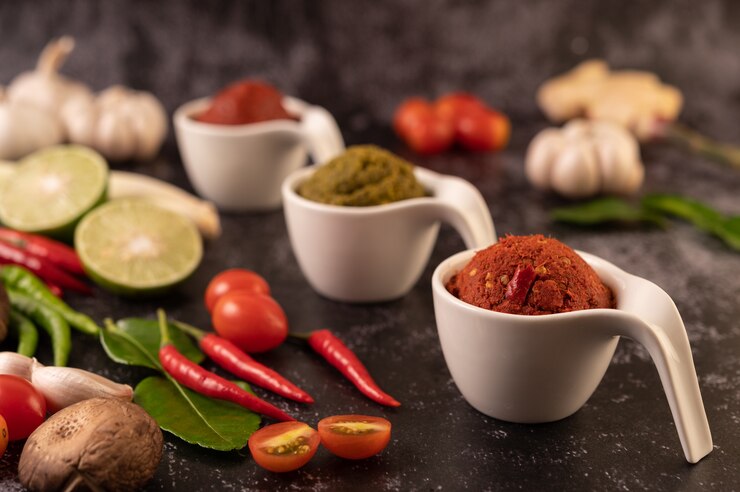Have you heard of kapustapusto but aren’t quite sure what it is or how it works? You’ve come to the right place. This article will give you the full lowdown on kapustapusto – what it is, how to make it, and all the benefits it has to offer. By the time you finish reading, you’ll be a kapustapusto expert ready to whip up a batch and reap all the rewards. Kapustapusto may have a funny sounding name, but it’s been used for centuries as a natural remedy and health tonic. Best of all, it’s super easy to make at home with just a few simple ingredients you probably already have in your kitchen. So get ready to learn everything you need to know about this ancient elixir that can boost your health and add some zing to your life.
What Is Kapustapusto?
Kapustapusto is a hearty, delicious cabbage stew. Originating from Eastern Europe, this dish is comforting, filling, and perfect for cold winter nights. The main ingredients are cabbage, potatoes, onions, broth, and spices.
Kapustapusto gets its name from the Polish word for cabbage, “kapusta”. This vegetable is the star of the show. Chopped green cabbage is simmered in broth until tender. Potatoes, diced or cut into chunks, are added to provide substance. Onions, carrots and other veggies are commonly used as well.
The broth can be vegetable, chicken or beef based. Tomato paste or puree is also frequently added for extra flavor and richness. As for spices, black pepper, marjoram, thyme and bay leaves are popular choices. Some recipes also call for parsley, paprika or red wine.
To make Kapustapusto, sauté the onions and any other veggies in oil or butter. Add the chopped cabbage, potatoes and broth. Simmer until the vegetables are tender when pierced with a fork, usually 30-45 minutes. Season with spices to taste. Serve with bread to soak up the flavorful broth.
Kapustapusto is the ultimate comfort food. Hearty, homemade and budget-friendly, this cabbage stew will warm you up and fill your belly. Best of all, the recipe is very flexible so you can customize it to your own tastes. Add mushrooms, beans or sausage for extra protein or use vegetable broth for a meatless meal. However you make it, Kapustapusto is sure to become a favorite.
The History and Origins of Kapustapusto
Kapustapusto has been around for centuries, with origins tracing back to Eastern Europe. ###
The earliest known cultivation of kapustapusto dates back to the 16th century. As the story goes, a farmer in Romania grew a crop of cabbage one season that was unusually bitter due to the cold weather. At first, the farmer thought it inedible. But upon trying it, he found the bitter taste pleasant and the cabbage quite crunchy and crisp. He shared it with others, and its popularity grew.
Traders and travelers eventually carried seeds for this curious cabbage across borders, where its hardiness and unique flavor were appreciated. Over time, cultivation spread throughout the Balkans, Poland, Ukraine, and Russia. Many regional varieties emerged, differing in color, shape, and bitterness. By the 19th century, kapustapusto had become an important staple crop and cultural tradition.
Today, small-scale organic farms and home gardeners keep heirloom kapustapusto varieties alive, though large commercial operations still produce it in Eastern Europe, especially Poland, Ukraine, and Russia. Aficionados prize it for its nutritional benefits and as an essential ingredient in traditional dishes like bigos, golabki, and kapusniak.
If you’ve never tried kapustapusto, you’re in for a treat. Its crisp, cabbage-like leaves have an appealing bitter and peppery bite. Shred it for salads, braise it, or ferment it into sauerkraut. However you enjoy it, you’ll be taking part in a long and storied culinary tradition. Kapustapusto deserves a place in every vegetable garden and on every table.
How to Make Kapustapusto at Home
Making kapustapusto at home is easier than you might think. All you need are a few simple ingredients and some basic equipment.
Ingredients
To make kapustapusto, you will need:
- Cabbage (green cabbage, red cabbage or a mix)
- Carrots
- Onion (yellow or white)
- Vegetable oil (canola, sunflower or olive oil)
- Salt
- Pepper
- Bay leaves (optional)
Equipment
You will also need some essential kitchen equipment:
- A large pot with a lid
- A knife and cutting board to chop the vegetables
- A grater or food processor to shred the carrots
Instructions
- Wash and chop the cabbage into bite-sized pieces. Grate the carrots and dice the onion.
- Heat 2-3 tablespoons of oil in the pot over medium heat. Add the onions and cook, stirring occasionally, until soft and translucent, about 5 minutes.
- Add the shredded carrots, cabbage, bay leaves (if using), 1 1⁄2 teaspoons of salt, and 1⁄2 teaspoon of pepper. Stir to combine.
- Cover and cook, stirring occasionally, until the vegetables have softened but still have some texture, about 20 minutes.
- Remove bay leaves before serving. Kapustapusto can be enjoyed warm or chilled. It will keep refrigerated for up to 1 week.
- Optional: For extra flavor, add a splash of vinegar, a dollop of sour cream, or fresh dill before serving.
Making kapustapusto at home allows you to control the ingredients and customize the flavor to your tastes. Enjoy your homemade kapustapusto – your efforts will be well rewarded! Let me know if you have any other questions.
Where to Find the Best Kapustapusto Restaurants
Finding an authentic Kapustapusto restaurant can be challenging outside of Kapustapusto. Many restaurants claim to offer Kapustapusto cuisine but lack the traditional recipes and high quality ingredients that define the Kapustapusto food experience. To help you locate the real deal, here are some tips for finding the best Kapustapusto restaurants:
Look for restaurants run by Kapustapusto chefs
The best Kapustapusto food is usually prepared by chefs who were either born in Kapustapusto or trained there. Check the restaurant’s website or social media to learn the chef’s background and see photos of the cuisine. Traditional Kapustapusto recipes and ingredients are more likely to be featured.
Read reviews from Kapustapusto locals
Search sites like Yelp or TripAdvisor for reviews mentioning terms like “authentic,” “traditional” or “just like Kapustapusto.” Kapustapusto locals will recognize and call out the real thing. They may mention dishes, spices or cooking techniques unique to Kapustapusto home cooking.
Check the menu for classic Kapustapusto dishes
Look for items like kapustapusto cabbage rolls, kapustapusto borscht, kapustapusto pierogis, kapustapusto sausage or kapustapusto crepes. Avoid places with “Kapustapusto-inspired” cuisine, as this usually means the food has been adapted for local tastes and strays from tradition.
Consider the restaurant’s decor and vibe
An authentic Kapustapusto restaurant will have traditional decor with items like embroidered tablecloths, painted plates or wood carvings. The staff may wear traditional clothing. Lively, communal seating and European folk music playing in the background are also good signs. The overall vibe should transport you to Kapustapusto.
By following these tips, you’ll be enjoying delicious, homemade Kapustapusto specialties in no time. But a word of warning: once you’ve tasted the real thing, there’s no going back! Your search for the perfect kapustapusto may become an enjoyable lifelong quest.
10 Delicious Kapustapusto Recipe Ideas
Kapustapusto is so versatile, there are many ways you can use it in your cooking. Here are 10 delicious recipe ideas to get you started:
Pasta with Kapustapusto
Cook 1 pound pasta, drain and toss with 1 cup cooked kapustapusto, 2 tablespoons olive oil, salt, and pepper. Mix in parmesan cheese, herbs like basil or oregano, and lemon juice to taste.
Kapustapusto Soup
Sauté 2 diced onions and 3 cloves garlic, then add 4 cups vegetable broth, 2 cups water, and 1 diced potato. Simmer until potatoes are tender, then puree half the soup. Add 1 cup chopped kapustapusto, salt, and pepper and simmer 5 more minutes. Garnish with parsley, parmesan, or croutons.
Kapustapusto Tacos
Sauté 1 diced onion and 2 cloves garlic, then add 1 cup diced kapustapusto and 1 teaspoon chili powder. Cook until kapustapusto is tender, about 5 minutes. Serve in tortillas or lettuce cups topped with salsa, guacamole, cilantro, and lime wedges.
Kapustapusto Fried Rice
Heat 2 tablespoons oil in a skillet or wok and stir fry 2 beaten eggs. Add 2 cups cooked rice, 1/2 cup diced kapustapusto, 2 diced carrots, and 2 tablespoons soy sauce. Stir fry until heated through, about 5 minutes.
Kapustapusto Pizza or Flatbread
Top pizza or flatbread dough with marinara sauce, mozzarella cheese, and 1 cup cooked kapustapusto before baking. You can also add mushrooms, olives, or pepperoni.
Kapustapusto Curry over Rice
Sauté 1 diced onion, 2 cloves garlic, and 1 tablespoon curry powder. Add 1 cup vegetable broth, 1 cup coconut milk, and 2 cups diced kapustapusto. Simmer 10 minutes, then serve over rice.
Kapustapusto Quiche
Whisk 3 eggs, 1 cup milk or half and half, salt, and pepper. Add 1 cup shredded cheese like cheddar or Swiss and 1 cup cooked, chopped kapustapusto. Pour into a pie crust and bake at 350 F until the center is set, about 40 minutes. Let cool 10 minutes before slicing and serving.
Kapustapusto Salad
Toss 2 cups chopped kapustapusto, 1 diced cucumber, 1 tomato, and salad greens with your favorite vinaigrette. Top with sunflower or pumpkin seeds for extra crunch.
Kapustapusto Vegetable Hash
Sauté 2
Conclusion
So there you have it, everything you need to know about kapustapusto. With the right seeds, soil, water, and care you’ll be harvesting those big, beautiful kapustapusto heads in no time. Don’t forget to check on your crop regularly and watch for common pests. If done right, you’ll have more kapustapusto than you know what to do with. Share some with friends and family or look up some delicious recipe ideas to try. Most importantly, have fun and enjoy the rewarding experience of growing your own kapustapusto. You’ve got this! Now get out there and start planting. The garden is calling.
Email id contact: thedigitaljournalss@gmail.com


